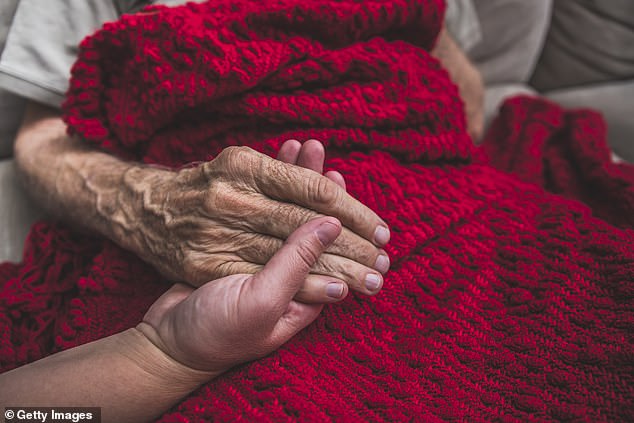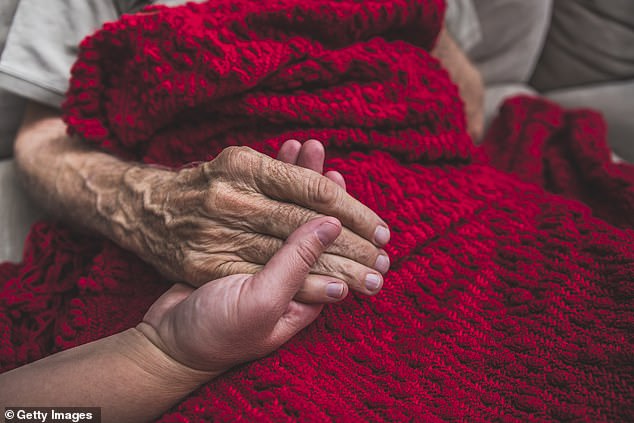Hospice nurse reveals the grim reality of what happens to the human body minutes, hours and days after death



Hospice nurse Julie is on a mission to remove the stigma and fear surrounding death.
The nurse previously worked in intensive care and ‘saw a lot of deaths’.
She says on her website: ‘As healthcare professionals we would talk among ourselves about the likelihood of our patients dying, but we would not talk to the patients or their families.
‘This [led] I want to make my voice heard and advocate for my patients and their families and start holding family gatherings.”
This led her to transition into hospice nursing, where she saw “the power that every body has to die naturally and how beautiful it really was.”
Now, nurse Julie posts educational videos on her YouTube channel that provide answers to common questions people have about dying.
In a recent one video which has been viewed more than 580,000 times, the nurse explains exactly what happens in the moments, hours and days after someone dies.

The body goes through several stages in the death and decomposition process, nurse Julie said
IMMEDIATELY AFTER DEATH
In the immediate moments after death, the body relaxes completely. This is the first stage of decomposition, called hypostasis.
Nurse Julie said: ‘All the things in your body that retain fluid relax. That’s why death can be messy sometimes.”
Due to the degree to which the body becomes relaxed, those who have just died may urinate, have bowel movements, or experience bodily fluids coming out of their nose, mouth, ears, or eyes.
She added: ‘I like to talk about it so people aren’t surprised when that happens – very normal and sometimes expected.’
This is also the time when the stage of decomposition called autolysis, or the self-digestion stage, occurs and enzymes begin to break down oxygen-depleted tissue.
Then the body temperature drops.
Everyone’s body reacts differently, said nurse Julie, and some will experience an immediate drop in body temperature, while for others, cooling won’t begin until an hour or two after their death – known as the algor mortis stage of decomposition.
The hospice nurse said that body temperature typically drops by 1.5 degrees per hour until it eventually reaches the temperature of the room the body is in.
A FEW HOURS AFTER DEATH
As the body settles into death, Nurse Julie said the blood will rush to the ground.
She said, “If you leave someone there long enough – which we do sometimes; you don’t have to hurry up and make sure your loved one leaves the house – when you turn him over, you will usually notice the back of his legs, the whole backside will look purple or darker, because all his blood is draining down.
‘Gravity pulls it down. So they end up with a darker skin color on their bottom.”
One to two hours after death, rigor mortis also occurs, lasting about 24 hours.
Rigor mortis is the stiffening of a person’s muscles after death, which is caused when the body’s metabolism stops and a depletion of adenosine triphosphate (ATP) occurs.
ATP is needed in the body to break down the actin-myosin filaments in the muscle fibers. These filaments are what contract and relax to allow movement when a person is alive.
When a person dies and their ATP is depleted, actin and myosin cannot be broken down, leading to permanent contraction of the muscles and stiffening of the body.
Nurse Julie said: ‘I’ve seen people become very stiff almost immediately after death – like a few minutes – and other people’s bodies take longer.’
Rigor mortis first occurs in the small muscles, such as the eyes and face, and then migrates to the neck, torso, body, hands, fingertips and toes.
In addition, the body will feel cool for about 12 hours after death.
24 TO 36 HOURS AFTER DEATH

Hospice nurse Julie explained exactly what happens in the moments, hours and days after someone dies
About a day to a day and a half after a person dies, rigor mortis subsides and the body begins to loosen up again.
Nurse Julie said the body’s tissues relax and cause stiffness to decrease.
By this time, the body is usually in the mortuary, which will prepare the body in the manner the family has requested, whether for burial or cremation.
She added: ‘In a world where people had no access to a mortuary or healthcare system and they simply died naturally, our bodies are built to decompose after death.’
Twenty-four hours is also the time when the body has cooled down to its core temperature, appropriate to the temperature of the environment
FOUR TO 10 DAYS AFTER DEATH
The final stage of decomposition is called putrefaction. During this phase, gases are released from the body that cause an odor and further discoloration of the skin takes place.
During putrefaction, the complex body processes stop and the delicate balance of bacteria in our body is disturbed.
The bacteria then feed on tissue, causing bloating and eventually migrating to the liver, spleen, heart and brain.
The body begins to emit gases such as methane and ammonia, creating a foul odor.
10 TO 20 DAYS AFTER DEATH
Black rot occurs between 10 and 20 days after death, when the exposed body turns black, swells further, and releases fluids and more odors.
Nurse Julie said, “This is the part where the body is literally decompensating and how we would die and how the body would die before we had anything like morgues. So it’s a very normal thing.
“However, we are not usually exposed to it… but this is a natural part of the body that is decomposing.”




